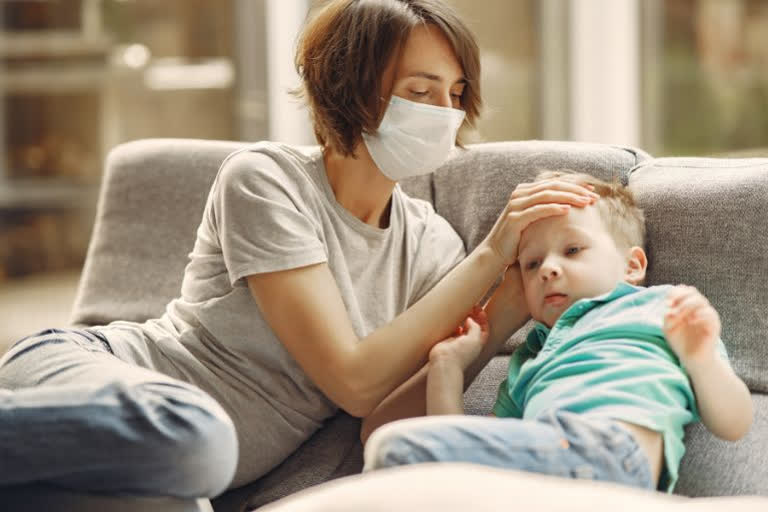Hyderabad: World Pneumonia Day is observed to highlight the seriousness of pneumonia as a public health problem and encourage other organizations and countries to come up with solutions to combat this disease. It is observed on November 12th every year with the aim of making people aware of pneumonia globally.
Pneumonia is a disease of the lungs, which infects the air sacs in the body. The root cause of this disease is considered to be bacteria. In this infection, the air sacs in the lungs of an infected person fill with water or pus (mass), causing the person to experience coughing, chest pain, and difficulty in breathing. During serious cases, the patient may even lose their life. Doctors say that pneumonia is not always fatal under normal circumstances, but if its treatment is delayed, its serious effects begin to appear. There are two kinds of pneumonia, Lobar Pneumonia and Bronchial Pneumonia.
Pneumonia affects people of all ages, but children are more affected by this infection. The effects of pneumonia in children are quite visible. According to statistics, one child dies of pneumonia every minute in India alone, while pneumonia accounts for 18 per cent of all deaths worldwide. About two million children under the age of five die from pneumonia every year in the world.
According to a global study by Save the Children, 1100 million children under the age of five worldwide and more than 17 lakh children in the country are at risk of pneumonia infection by the year 2030. Bacteria such as Mycoplasma pneumonia and Chlamydophila pneumonia are the major causes of the disease among children. Due to these bacteria, children usually show mild symptoms of pneumonia, which is also known as 'Walking Pneumonia' in informal terms.
Symptoms like dry cough, mild fever, headache and fatigue appear in children with this condition. These are treated with standard antibiotic treatment. But as the problem progresses, symptoms such as high fever, sweating or chills, blue nails or lips, wheezing in the chest and shortness of breath begin to appear. Children with severe pneumonia may also witness problems in eating or drinking and may experience symptoms of fainting, hypothermia, and rigors.
Also read: Benefits of 'Mulethi' during winter
Although in our country, children are vaccinated with Pneumococcal Conjugate Vaccine (PCV) as part of their routine vaccination to protect them from this infection, which is given to newborns and young children at the age of 2, 4, 6, 12 and 15 months. Symptoms of Pneumonia are as follows:
- Chest pain when breathing or coughing.
- Fatigue.
- Fever, sweating and chills.
- Rapid breathing and shortness of breath.
- Weakness.
- Diarrhoea.
- Headache.
- Pain in the muscles.
- Vomiting
World Pneumonia Day was established in 2009 by the Global Coalition Against Child Pneumonia. The Global Coalition Against Childhood Pneumonia is a network of international, governmental, non-governmental and community-based organizations, research and academic institutions, foundations and individuals. When the first World Pneumonia Day was launched, pneumonia was taking the lives of about 1.2 million children each year.
WHO and UNICEF released the Integrated Global Action Plan for the Prevention and Control of Pneumonia and Diarrhoea in 2013. It sets a target of fewer than three childhood pneumonia deaths per 1000 live births in each country by 2025. The International Vaccine Access Center (IVAC) released the first Pneumonia and Diarrhea Progress Report in 2013 and the rapidly growing Pneumonia Innovation Network hosted the Pneumonia Innovation Summit in 2015.



